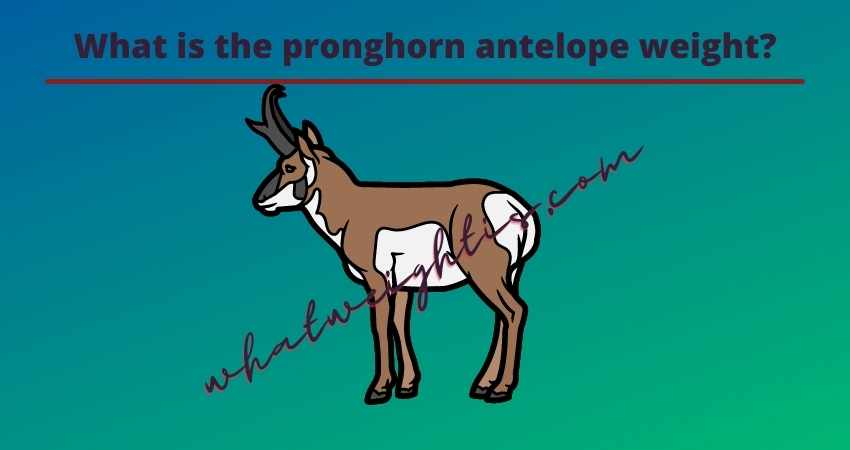The American pronghorn antelope, Antilocapra americana, is a remarkable species of North American grasslands and deserts. This species’ high velocity and unique physical traits have made it well-known and established a distinct ecological niche. The pronghorn antelope is known for its speed, yet its body weight is crucial in understanding their adaptations and survival tactics.

Weight variability: Adapting to varied settings.
Pronghorn antelope weight varies by age, sex, geography, and resource availability. Most mature male pronghorns weigh 100 to 130 pounds (45 to 59 kilograms), whereas adult females weigh 75 to 100 pounds. Newborn calves weigh 5–9 pounds (2.3–4.1 kg).
The pronghorn’s weight swings show its adaptability. These herbivores thrive in dry and semi-arid regions with restricted food supply because to their smaller body mass. Maintaining a stable weight helps pronghorns find and utilize feed, a crucial survival skill in harsh conditions.
The Evolutionary Importance of Organism Speed Introduction: The capacity to move quickly has helped many species survive and evolve. Speed as an adaptation mechanism has evolutionary consequences and benefits for creatures in their settings. Adaptations Evolutionary: Speed has been characterized.
The extraordinary speed of pronghorn antelopes stands out. The topic is one of the fastest terrestrial species in North America, reaching 55 to 60 mph (88 to 97 kph) for short periods. They can also travel many miles at predatory speeds. The amazing quickness has been crucial to their evolution.
The American cheetah, an extinct predator known for its speed, lived alongside the North American pronghorn 20,000 years ago. A quick predator may have driven the pronghorn’s evolutionary adaptation to speed. After the American cheetah died, the pronghorn had no natural predator that could match its speed. Thus, pronghorns preserved their speed without their main predator. This example shows how evolution happens nonlinearly, sometimes preserving features created as adaptations to environmental restrictions.
Adaptations that increase organism speed and survival are of interest.
The pronghorn’s physical adaptations for fast speeds are extraordinary. These creatures have lightweight bodies, extended legs, and strong hindquarter muscles for fast mobility. Besides their morphological traits, pronghorns have a variety of sensory talents that allow them to detect threats from long distances.
Pronghorns shed and regrow their bifurcated horns annually. The horns have a keratinous coating like human hair and nails, unlike deer antlers. Male pronghorns use their 20-inch (50-cm) antlers to assert authority and fight for territory during breeding. Although not directly related to speed, the pronghorn’s horns add to its enigmatic nature.
The topic is conservation challenges and solutions.
What is the antelope weight?
Although not endangered, pronghorn antelopes face conservation issues. The loss of natural habitats due to urbanization, agriculture, and industrial development can split species ranges and disrupt migration pathways. Fences and roadways also pose threats to numerous animal species during their annual migrations.
Conservation efforts have addressed these issues. Land preservation efforts, wildlife corridors, and government, conservation, and local cooperation have helped pronghorn populations survive. We can help pronghorn antelopes thrive by protecting their habitats and ranges.
In summary,
The pronghorn antelope shows remarkable adaptability and evolution. The organism’s lightweight structure and high velocity help it navigate challenging environments and avoid predators. Weighing an organism is strongly related to its survival strategy and biological niche, but it is not its main defining attribute. Understanding the pronghorn’s adaptive qualities and challenges will help us understand the need to conserve its natural environment and ensure its survival.
Mr. Jahangir Alam is an Electrical & Electronics Engineer with a wide range of experience in several fields of Engineering. He finds engineering articles to be very interesting, and that is why he likes to write them. To know more about him, please click here.

